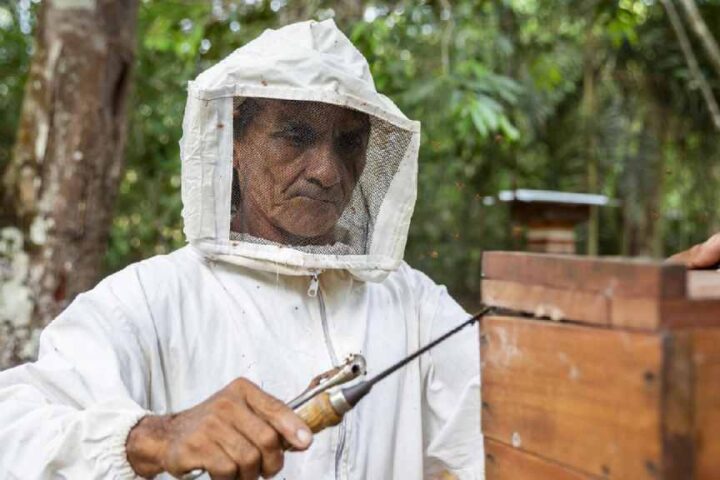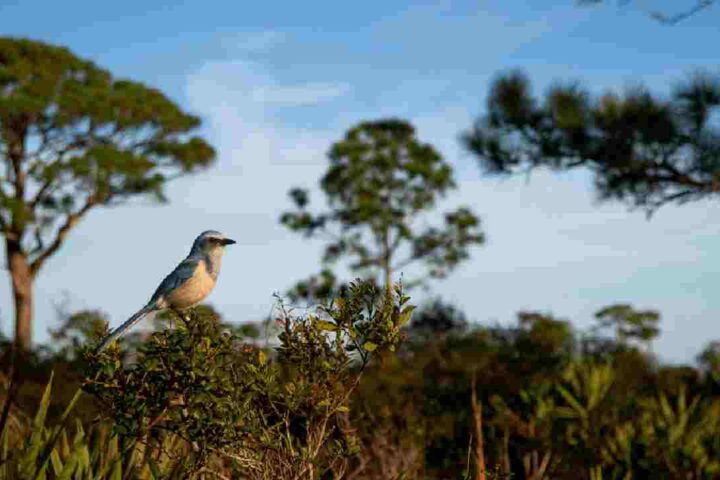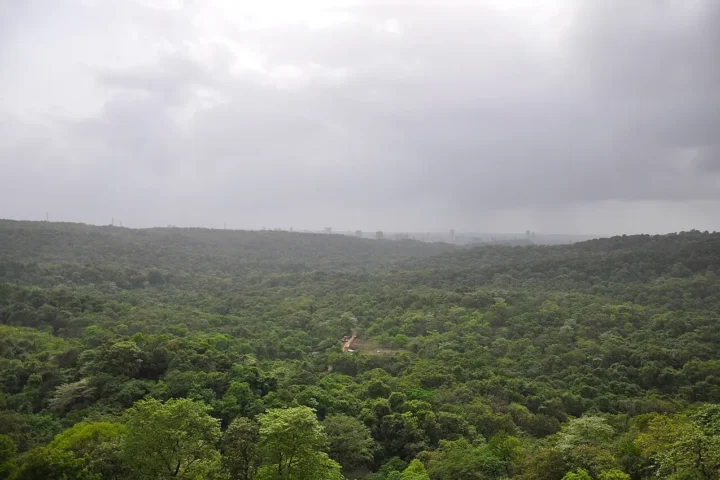In the dense jungles of UP, India, a Bagh Mitra (Tiger Friend) volunteer monitors his mobile phone. His WhatsApp alerts show tiger movement toward village grazing lands. Within minutes, local herders receive warnings to reroute their cattle. This community‑operated app‑based alert system has helped minimize human–tiger conflicts in the Pilibhit Dudhwa area.
On Global Tiger Day (July 29, 2025), this improved situation is due to the evolution of tiger conservation—where hi‑tech meets traditional knowledge, and Indigenous Peoples and Local Communities (IPLCs) stand at the frontline of protection efforts while ensuring even their safety.
🐅 Test Your Tiger Conservation IQ!
1. What % increase did global tiger numbers see between 2015–2022?
2. Which tech tool helps villagers in Pilibhit‑Dudhwa track tiger movements?
3. ITHCP has restored how many hectares of tiger habitat?
Local Stewards of Tiger Habitats
The International Union for Conservation of Nature (IUCN) has designated this year’s theme as “Securing the future of Tigers with Indigenous Peoples and Local Communities at the heart,” recognizing that conservation succeeds when led by those who know the land best.
IUCN Director General, Dr Grethel Aguilar, has emphasized the importance of IPLC partnerships in tiger conservation, noting how these collaborations benefit both wildlife and communities.
Global Tiger Day originated at the 2010 Saint Petersburg Summit, where tiger range countries committed to doubling wild tiger populations. Since then, tiger numbers have increased by approximately 40% globally between 2015 and 2022, according to IUCN and Panthera data.
Community-Centered Conservation Model
The IUCN’s Integrated Tiger Habitat Conservation Programme (ITHCP), supported by the German Cooperation via KfW Development Bank, has invested €47.5 million across 33 projects in seven countries: Bhutan, India, Bangladesh, Nepal, Myanmar, Indonesia, and Thailand.
This rights‑based approach has yielded measurable results. Over 10,500 hectares of tiger habitat have been restored, with more than 500,000 trees planted to rewild degraded landscapes. The ITHCP’s Phase I evaluation indicates that 85% of projects met their habitat‑restoration targets.
The human impact is equally substantial. More than 95,000 people—over half of them women—have directly benefited from sustainable livelihoods, clean energy solutions, and conflict mitigation initiatives. Additionally, over 10,000 people have received training to strengthen law enforcement and improve habitat management.
Christiane Laibach, Member of the Executive Board at KfW, noted: “Tiger conservation goes beyond protecting a single species—it strengthens entire ecosystems, supports local communities, and fosters more peaceful human-wildlife coexistence.” KfW’s funding has leveraged additional support from bilateral partners such as GIZ and USAID.
India’s Tiger Recovery
India remains the global leader in tiger conservation, home to 3,682 tigers across 58 reserves—approximately 75% of the world’s wild tiger population—as per the 2022 census.
This success stems from a dual‑landscape strategy that combines strict protection inside reserves with community involvement in buffer zones. The Bagh Mitra (“Friends of Tigers”) program exemplifies this approach: in Uttar Pradesh, a network of over 120 local guardians uses mobile technology to alert communities about tiger movements, reducing livestock predation and retaliatory killing.
Tamil Nadu has pioneered another innovation: GIS‑mapped wildlife corridors connecting major reserves including Mudumalai, Anamalai, Indira Gandhi, Sathyamangalam, and Nilgiris. These corridors are designed to reduce genetic isolation among tiger populations.
Challenges Outside Protected Areas
Despite these successes, significant challenges remain. Government data reveals that 51% of tiger deaths since 2021 occurred outside designated reserves, where tigers encounter humans more frequently.
To address this issue, India’s Ministry of Environment, Forest and Climate Change will launch the Tigers Outside Tiger Reserves (TOTR) project in mid‑2025. The program will cover 80 forest divisions across 17 states when it formally launches.
Financial constraints also hamper conservation efforts. The Global Tiger Forum identified a US $350 million annual shortfall in range‑country conservation budgets, limiting the expansion of community incentives and law enforcement capacity.
Climate Resilience Through Corridors
In Bhutan, conservation efforts link tiger protection with climate adaptation. The country’s 2022 National Tiger Survey reported rising tiger numbers alongside newly established forest corridors that also help buffer monsoon flooding.
The WWF’s Tigers Alive Initiative reports similar synergies, with community‑patrolled zones showing improved cub survival rates in their latest assessment.
Rewilding Innovation
Rajasthan’s Mukundra Hills Tiger Reserve is piloting orphan‑cub rehabilitation protocols, demonstrating the viability of scientifically managed rewilding efforts for displaced tigers.
Technology Meets Traditional Knowledge
IUCN has featured IPLC leaders discussing their role in tiger conservation, capturing firsthand accounts from community members who balance traditional ecological knowledge with modern monitoring techniques—much like the guardians of the Amazon rainforest in Amazon’s Last Guardians.
Dr Aguilar has publicly advocated IPLC land‑tenure reforms as essential for securing tiger habitats in global forums.
Facts and Figures
Tiger conservation encompasses numerous stakeholders and approaches. More than 675,000 people have been reached through ITHCP awareness‑raising activities promoting conservation and human–wildlife coexistence. The program’s multidimensional strategy—protecting species, preserving habitats, and supporting people—has created conditions for long‑term coexistence.
Global Tiger Day 2025 marks a pivotal moment for tiger conservation. The IUCN’s “10 Years of Tiger Conservation Action” report, released in October 2024, documented a decade of achievements under ITHCP and confirmed the essential role of IPLCs in conservation success.
The facts presented here reflect ongoing efforts across multiple countries to protect tigers through community engagement, habitat restoration, and technological innovation.
Further Reading on Karmactive
- Nature & Conservation
- India’s tiger population doubles to 3,682
- Nepal’s tiger population triples to 355
- Similipal’s black tigers genetic crisis
- Amur tigers return to Kazakhstan
- Project Tiger at 50: A beacon of hope
- Tragic end for rare black tiger
- Rare black tiger spotted in Odisha
West Midlands Safari Park births Sumatran cubs



















